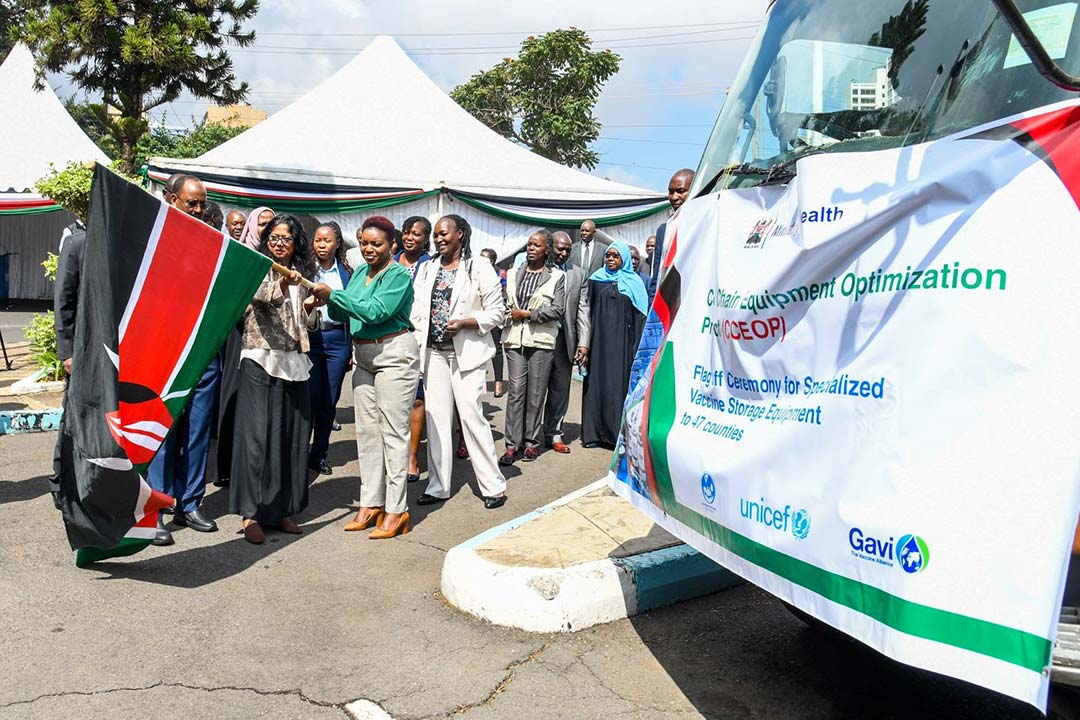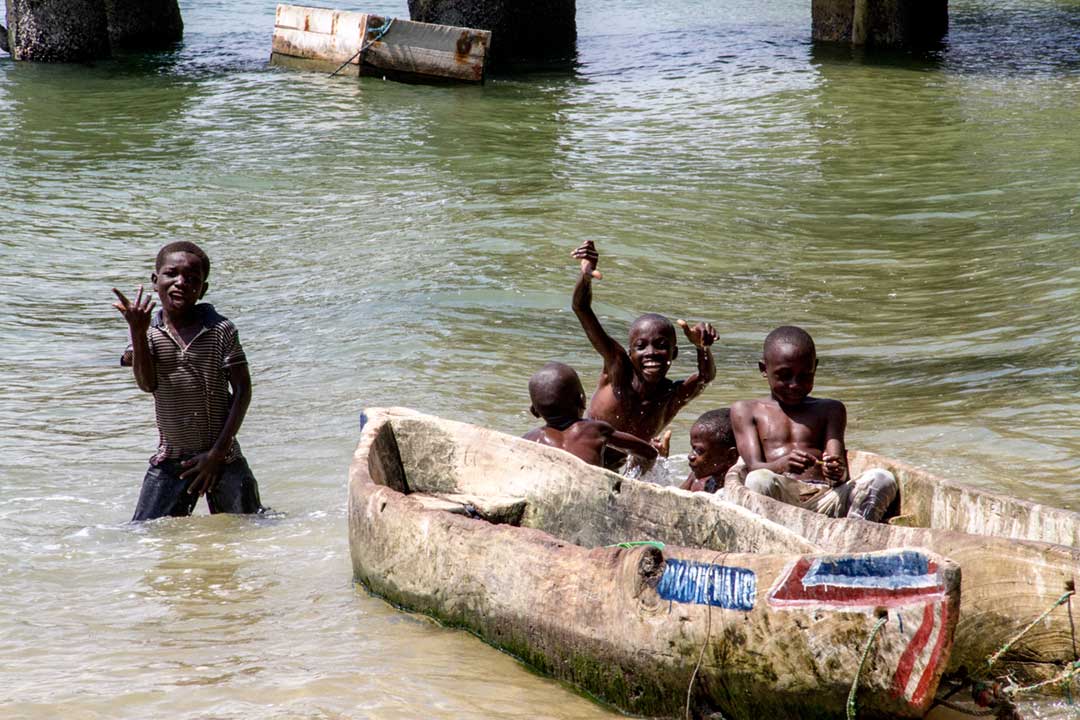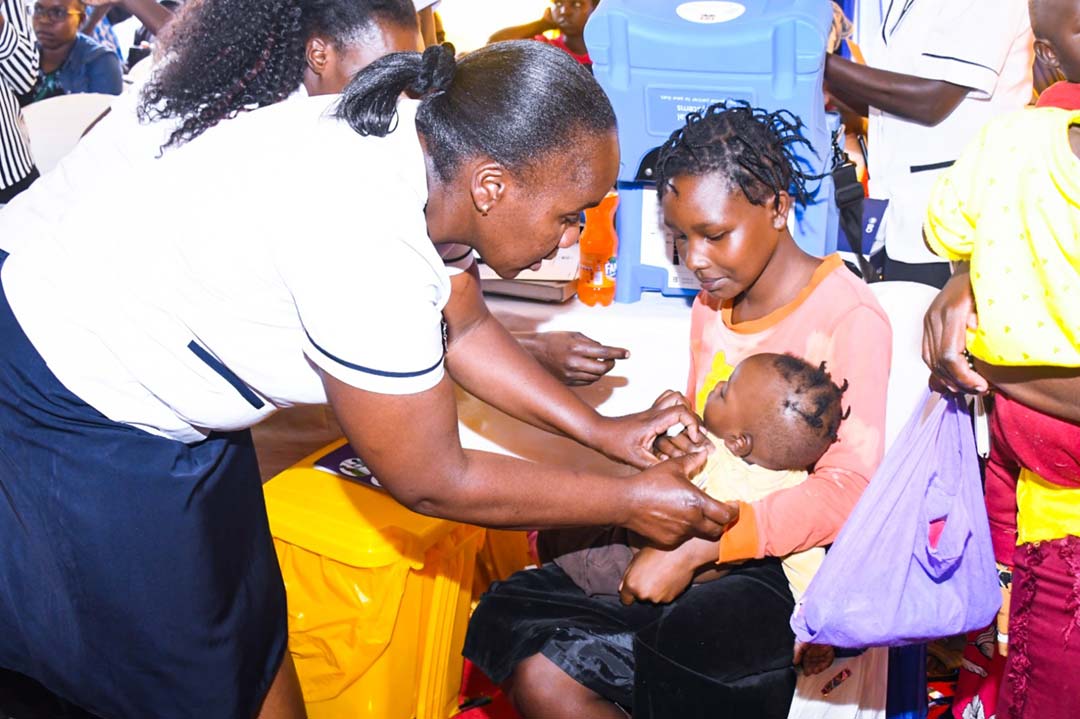Kenya cholera vaccine campaign smashes target, but climate change boosts risk
104.5% of the target group were immunised in an August campaign but, amid erratic weather conditions, the threat of cholera remains one to take seriously.
- 28 August 2023
- 6 min read
- by Mike Mwaniki
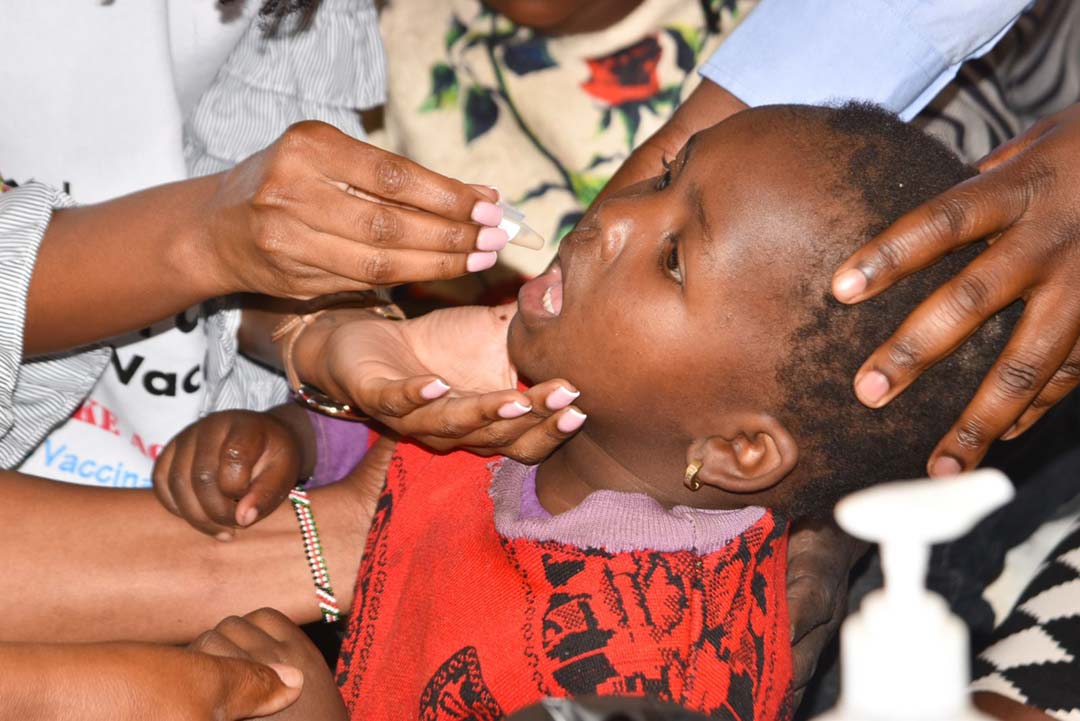
Kenya surpassed its target of vaccinating 1.59 million people in eight high-risk counties during a 10-day oral cholera vaccine (OCV) campaign that ran from 3 August to 12 August.
“The case fatality rate of the cholera outbreak stands at 1.7%, underscoring the severity of the situation.”
– Dr Emmanuel Okunga, Disease Surveillance and Response Unit, MoH
Acting head of the Health Ministry's Disease Surveillance and Response Unit Dr Emmanuel Okunga attributed the drive's success to a strategy that aimed for ubiquity. That meant "deploying teams of the 1,886 vaccinators and 943 volunteers in a house to house, public places, churches, mosques, settlements, water points and health facilities vaccination drive," in his words. 1.67 million people were reached – 104.5% of the campaign target.
Kenya's cholera outbreak
Speaking in Nairobi, Dr Okunga said the campaign is in response to a Kenyan cholera outbreak which was first reported in October 2022 and has so far resulted in 11,872 cases and 196 deaths across the country.
"The case fatality rate of the cholera outbreak stands at 1.7%, underscoring the severity of the situation," he said. The World Health Organization is calling for access to adequate life-saving treatment to maintain case fatality rates below 1%, which is achievable when appropriate interventions are deployed.
Recent cholera epidemics in different parts of the world, however, have far exceeded that standard, with the average case fatality rates across outbreaks in 2021 standing at 1.9% globally, and 2.9% in Africa.
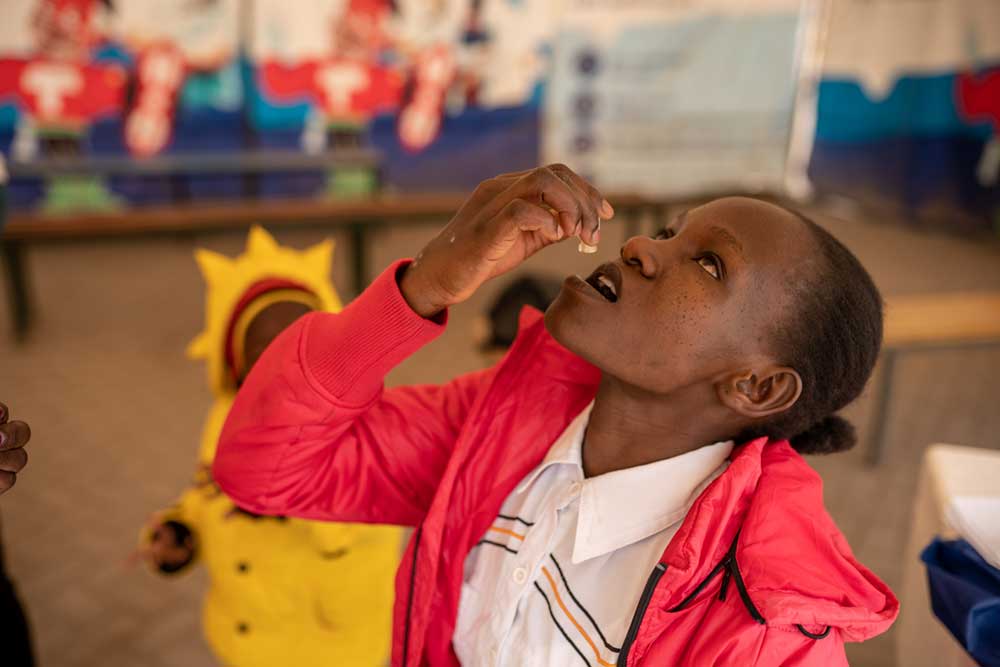
Credit: Kelvin Juma
The recently-concluded immunisation campaign, Dr Okunga noted, targeted key sub-counties with high caseloads and fatality rates - "The outbreak had affected 26 counties, which is about half of the country."
In early August, during a media breakfast meeting, the Health Ministry's deputy director general Dr Sultani Matendechero identified Nairobi, Mandera and Wajir as some of counties that continued to report cases of the deadly, and explosively epidemic, bacterial infection.
"The war [against cholera] is not over," he said. "The disease can easily spill over to other counties and people should ensure they drink safe, clean water and food while embracing hygiene and sanitation practices like washing hands and safe disposal of human waste."
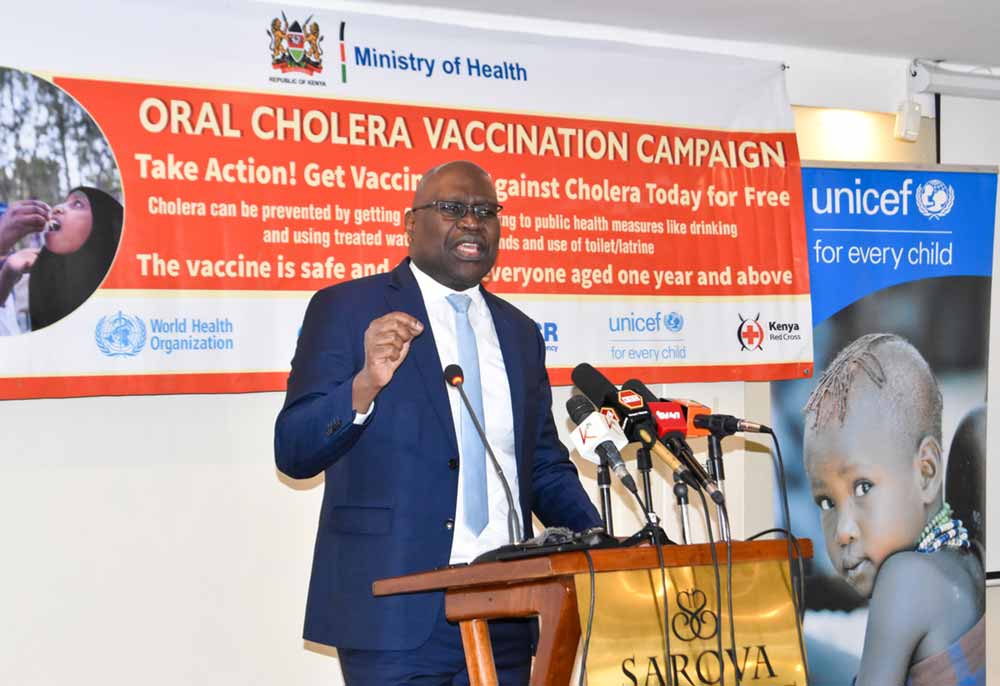
Credit- Mike Mwaniki
Dr Matendechero explained that cholera is an acute diarrhoeal infection caused by eating food or drinking water that is contaminated with Vibrio cholerae.
"The reason we decided to be vaccinated was because two of our close friends died recently from the disease after they were infected.”
– David Okello, 75
"Cholera is endemic in Kenya, with outbreaks occurring during different periods, also influenced by climate change," he said. "Most cases are asymptomatic, [but] affected persons are infectious during the acute stage of the disease up to days after recovery, with deaths occurring [in some cases] within hours after infection if not treated properly".
A multifaceted response
Dr Matendechero noted, "The Health Ministry is strengthening coordination activities, water, sanitation and hygiene efforts, risk communication networks, community engagement, patient case management and laboratory confirmation of cases in collaboration with county governments, line ministries and partners."
The Health Ministry's National Vaccines and Immunisation Programme Head, Dr Rose Jalang'o says Gavi, which funds the global cholera vaccine stockpile, and the International Coordinating Group (ICG), which approves applications for doses, provided the 1.7 million-plus vaccine doses to Kenya for the OCV campaign. A separate shipment of 1.6 million doses from Gavi and the ICG was also deployed in January 2023 to help the country curb the outbreak.
Have you read?
The vaccine is safe and effective, with a single dose offering a high level of protection lasting at least six months and as long as two years.
Nairobi's spike in cases sees overwhelming demand for the vaccine
The Nairobi City County Government Executive for Health, Nutrition and Wellness, Suzanne Silatoi said more than 190 cholera cases had been confirmed in Kamukunji, a neighbourhood in the bustling capital, prior to the launch of the OCV campaign.
A local health worker, Elizabeth Atieno, said people turned up in their hundreds for vaccinations.
"The turnout for the campaign was overwhelming," she said. "So many people who reside in neighbouring sub-counties also crossed boundaries to get vaccinated".
George Kamau, a vaccinator, says some of the challenges they faced included reaching out to eligible people residing in hard-to-reach areas and gated communities.
"However, OCV vaccinations in public places such as markets and playgrounds attracted enthusiastic crowds in which hundreds of eligible people were vaccinated."
“New cholera hotspots due to frequent weather changes attributable to season patterns will prolong and intensify transmission periods. We therefore need to establish early warning systems and surveillance that monitor climatic conditions and predict potential cholera outbreaks.”
– Pamela Muage, Assistant Director of the Meteorological Services
David Okello, 75, says he was among the first people to be vaccinated when the OCV campaign was launched in Kamukunji on 3 August.
"I was accompanied by my wife during the exercise. The reason we decided to be vaccinated was because two of our close friends died recently from the disease after they were infected," Okello said.
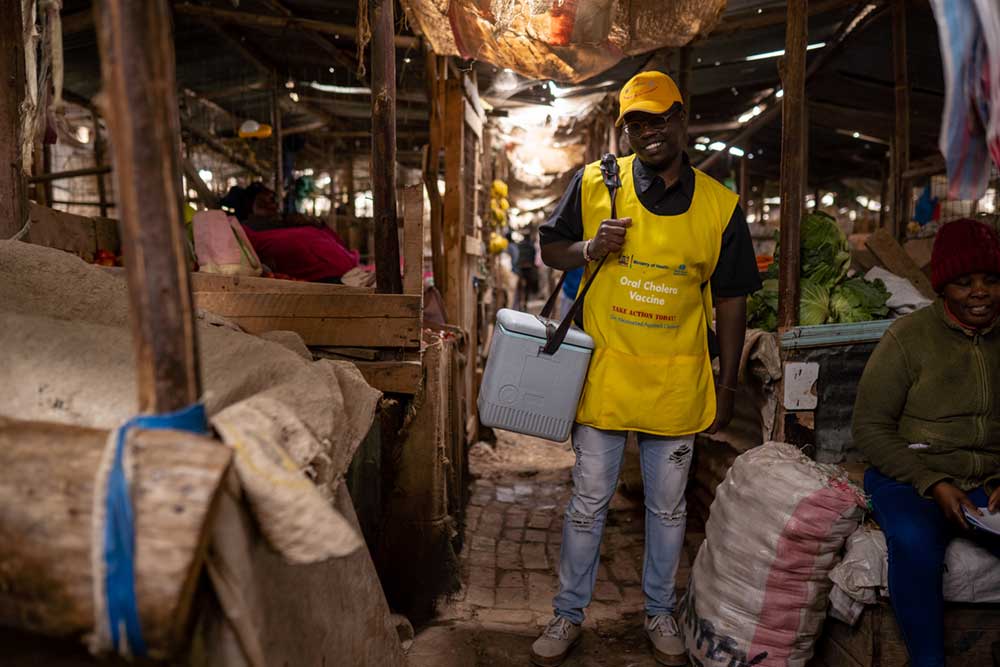
Credit: Kelvin Juma
Another resident, Rosemary Wanjira, explained: "a message was sent via my mobile phone by the Ministry of Health and UNICEF informing me about the vaccination campaign.
"Since I live in an informal settlement with inadequate water supply and sanitation facilities, I decided to be vaccinated to protect myself against cholera."
El Nino and the growing threat of climate change
Kenya's meteorological department forecasts that the country is likely to experience severe weather due to the El Nino phenomenon in September and October. Heavy rains could result in a spike in water-borne diseases including cholera, amid floods and flash floods.
Assistant Director of the Meteorological Services, Pamela Muage, has identified climate change as one of the factors contributing to cholera outbreaks in Kenya. "High temperatures and precipitation, for example, affect the availability and quality of drinking water.
"Heavy rainfall also results in flooding, leading to contamination of water resources facilitating spread of cholera."
She added: "At the same time, the rise of sea level at the coastal area due to climate change leads to intrusion of salty water from the Indian Ocean to the mainland, resulting in lack of safe drinking water."
In future, Muage warned, an increase in the number and range of cholera "hotspots" is expected. That may result in cases of the disease occurring in areas which were previously not considered at risk.
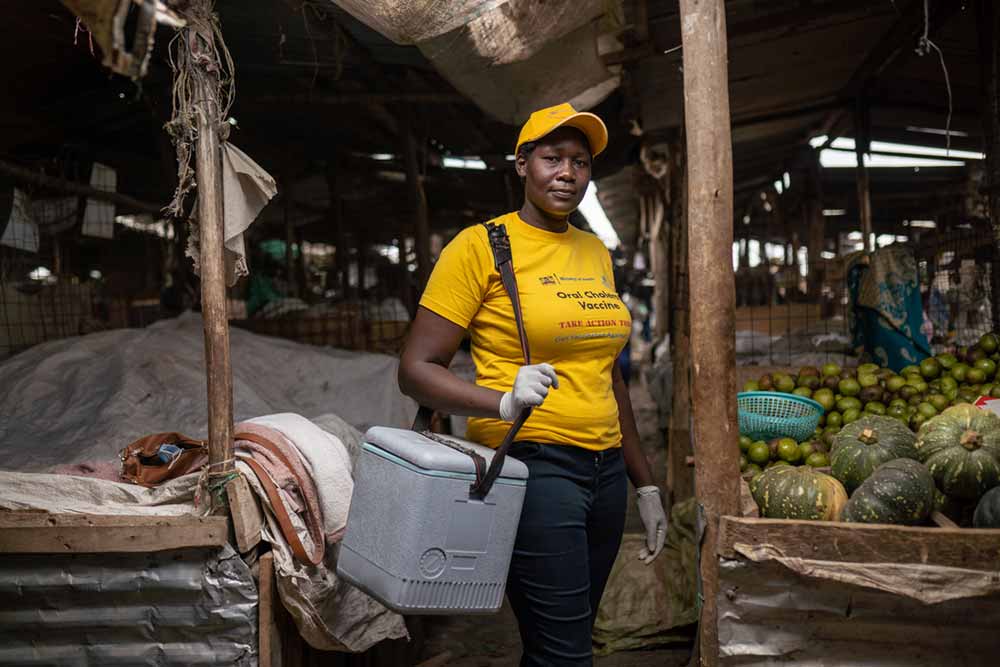
Credit: Kelvin Juma
"New cholera hotspots due to frequent weather changes attributable to season patterns will prolong and intensify transmission periods," Muage says. "We therefore need to establish early warning systems and surveillance that monitor climatic conditions and predict potential cholera outbreaks."
The Ministry's Dr Okunga said that during heavy rainfall, the burden of cholera cases - especially in slums - increases as water sources become contaminated. And the opposite – low rainfall leading to a rise in cases – can also be true.
"During low rainfall, which is a precursor to drought, we experience high temperatures which leads to increased cholera burden in the arid and semi-arid areas in North-Eastern, Kajiado and Narok among other areas as pastoralists migrate in search of pasture and water, resulting in over-crowding," he explained. "During this period, malnutrition remains high while the communities engage in poor hygiene practices, resulting in sporadic cholera outbreaks."
